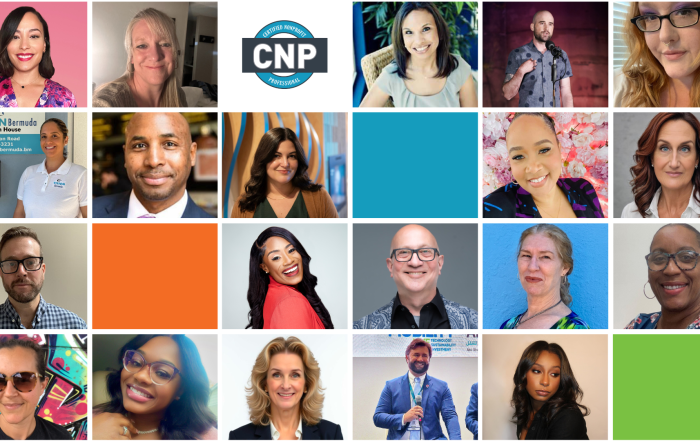Research predicts that member-based organizations will experience an uptick in new membership this year, building upon a trend that’s already been in motion for years. It’s up to your association to harness this momentum by not only reaching out to potential new members but also creating marketing materials that keep your existing members engaged.
Behind any great marketing strategy is an effective plan. In this guide, we’ll review key strategies for planning resonant and dynamic membership renewal marketing campaigns.
1. Determine foundational details.
Creating a foundation for your membership-renewal marketing strategy helps you stay on track throughout the planning process. Establish a strong base for your marketing campaign by gathering details about your:
- Target audience. According to Fifty & Fifty, the foundation of any successful marketing campaign is understanding how to cater to your target audience. Complete member personas with information like age, membership status, family status, career aspirations, and other details that are relevant to your campaign. The more detailed your personas are, the better.
- Renewal history. For this campaign’s purposes—securing membership renewals—you need to understand the drivers for past membership renewal. For instance, a union might discover a trend of increasing renewals around popular hiring times using their software’s stored data.
- Marketing data. If you’ve run membership renewal marketing campaigns in the past, you have a trove of valuable data in your database. Reflect on the insights gathered from past campaigns during the planning stage. It’s especially helpful to collect data related to your current key performance indicators (KPI).
This is just the beginning of the data you should collect at this stage. Use your best judgment to include other relevant data. For example, if you recently merged with a similar organization, work with their team to access useful data from their former member base.
2. Choose communication channels.
Your marketing materials will only make an impact if your intended audience can easily access them. That’s why strategically choosing your communication channels is extremely important for the success of your membership renewal marketing campaign.
Keep the following elements in mind when selecting your communication channels:
- Outward member preferences. These preferences come directly from members, whether using a survey or checkbox on an event signup form. For instance, a member might select “notify me via email” for your newsletter over text message.
- Demographic information. Certain demographic groups (such as age) tend to prefer certain communication channels. For example, younger members are more likely to read text messages and other digital communications than older generations of members.
- Content suitability. Do you have a video series planned as part of your organization’s marketing campaign? You’ll want to focus on digital channels to efficiently post and share digital content. Likewise, tangible marketing content, like flyers or swag bags, requires in-person distribution methods, such as events and meetings.
- Cost-efficiency. You’ll need to factor in two types of costs while planning your marketing channels—money and time. While many digital channels are free to use, you might need to invest more time in creating them without premium features to help, or save time by investing in added features. Use existing channels when possible to avoid extra costs—for example, instead of investing in a new text messaging infrastructure, a union could use its existing member app to communicate more affordably.
Remember that the communication landscape is changing constantly. Always be on the lookout for new and exciting channels that might align with your members’ interests, campaign budget, and organizational goals.
3. Develop segmentation criteria.
Next, you’ll need to dive deeper into how you’ll personalize your marketing materials. That’s where segmentation comes in handy.
Marketing segments allow you to send highly-curated materials to different audience members based on shared characteristics. Here are some examples of segmentation criteria you might use:
- Preferred communication channels
- How long they’ve been a member
- Engagement level with the association
- Membership tier
- Renewal history
- Retention risk level
Once you’ve picked segmentation criteria that aligns with your objectives, create and schedule communications that speak to each group’s motivations. For example, here are two subject lines for a marketing email targeting members based on the length of their membership history:
- Group A (5 years): Thanks for five amazing years! Get a special deal for renewal today!
- Group B (< 1 year): Enjoyed your first year with us? Renew today to keep your benefits!
4. Brainstorm engagement strategies.
Now that your basic foundation is set, your organization can take your renewal marketing campaign to the next level with custom engagement strategies. These elements are what make your materials stand out and get members to renew. Here are some ideas to help your organization get started:
- Incentives. No matter how long a member has been with your organization, sweetening the deal with incentives is a surefire engagement strategy. Provide perks like reduced membership fees, access to exclusive educational materials, gift cards, branded merchandise, or an invitation to an exclusive event.
- Peer-to-peer outreach. Your members are likely to trust their peers in the organization, which can be used as a tool for boosting renewal. Enlist your most passionate members to be a part of the renewal campaign as peer-to-peer marketers. Provide them with templates that they can send to their peers in the organization, complete with renewal benefits and a link to easily sign up.
Once you’ve brainstormed engagement strategies, draft marketing messages centered around them to your content calendar. For example, you may create a social media post promoting reduced membership fees for members who renew by the end of the week.
Next steps: Monitor and adjust your strategies.
Once your marketing plan is finalized and your strategies are put into motion, your work isn’t done yet! There’s always room for improvement, and the data you collect during this campaign is crucial for making these adjustments. Monitor relevant marketing key performance indicators (KPIs) for your campaign’s purpose, like membership renewals and click-through rates, to gauge your success and make changes to your strategy as needed.
Did you enjoy this story?
Get nonprofit tips and tools delivered right to your inbox by joining The Nonprofit Leadership Alliance Newsletter. Our bimonthly newsletter will make sure you know what’s happening with our network of social sector leaders.
Why Nonprofit Emails Go Unread — And How To Change That
Nonprofit organizations depend on email as a key communication tool for engaging supporters, sharing impact stories, and driving donations. Yet many nonprofit emails remain unopened or ignored, limiting their reach and effectiveness. Understanding the factors
Types of Tools to Strengthen Your Grants Compliance Approach
When grant funding is an important revenue source, grant compliance becomes critical to nonprofit success. Without it, grant funding could be jeopardized, putting vital programs and initiatives at risk. This makes optimizing your grants compliance
Introducing April 2025’s Certified Nonprofit Professional (CNP) Cohort
The Nonprofit Leadership Alliance is proud to introduce April 2025’s Certified Nonprofit Professional (CNP) Professional Track cohort! This group of nonprofit professionals have begun their six-month journey, participating in one of only four cohorts offered



